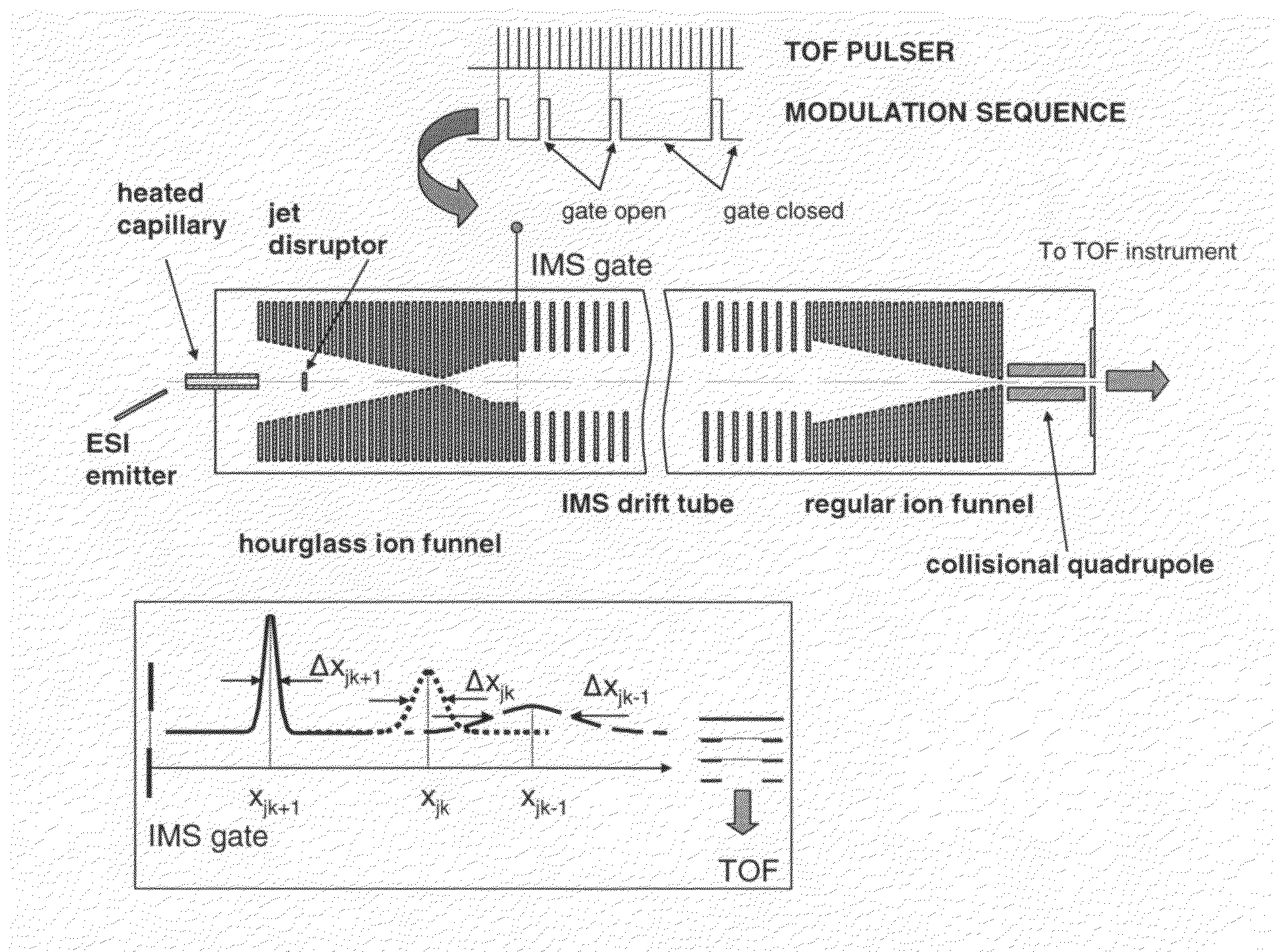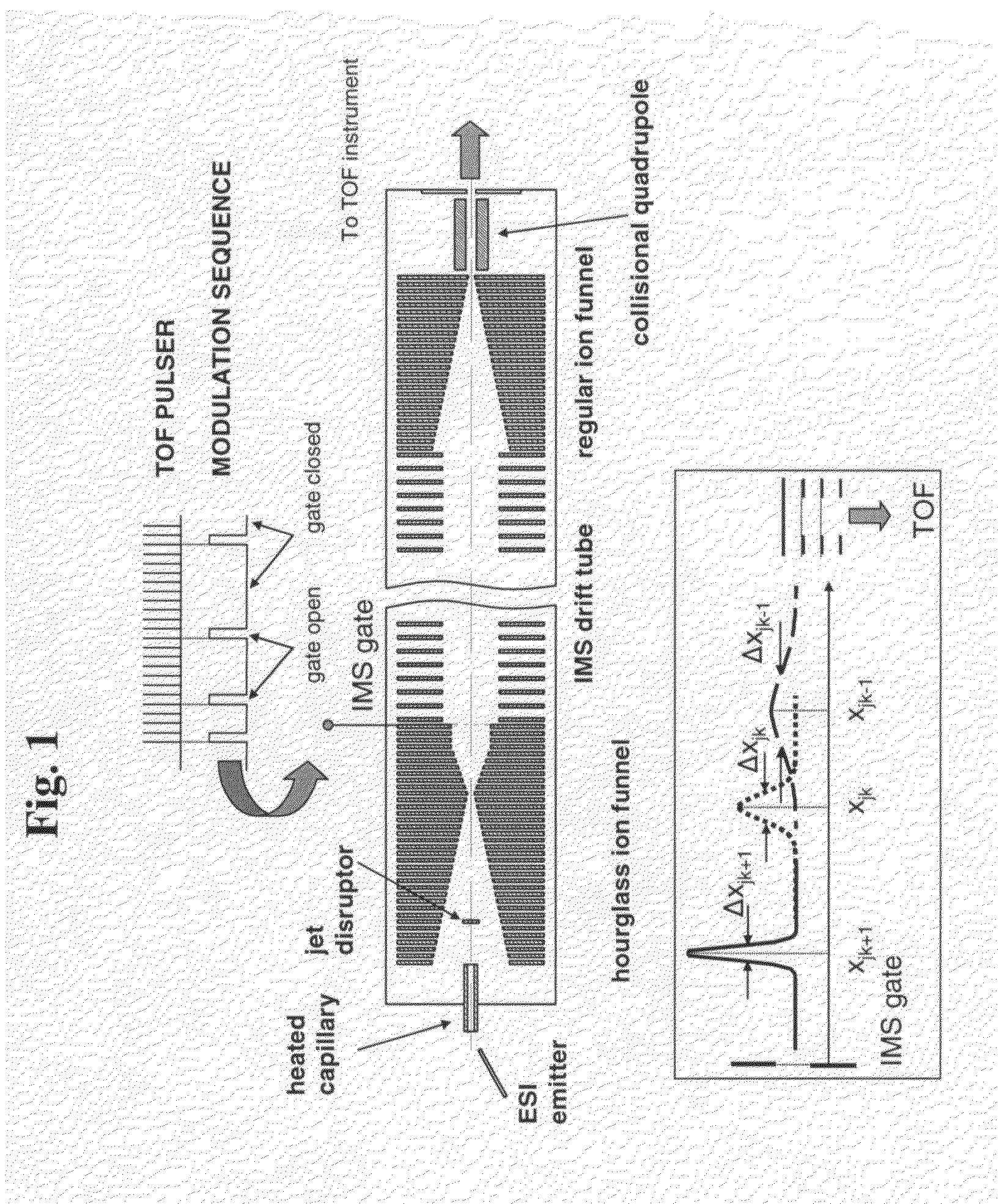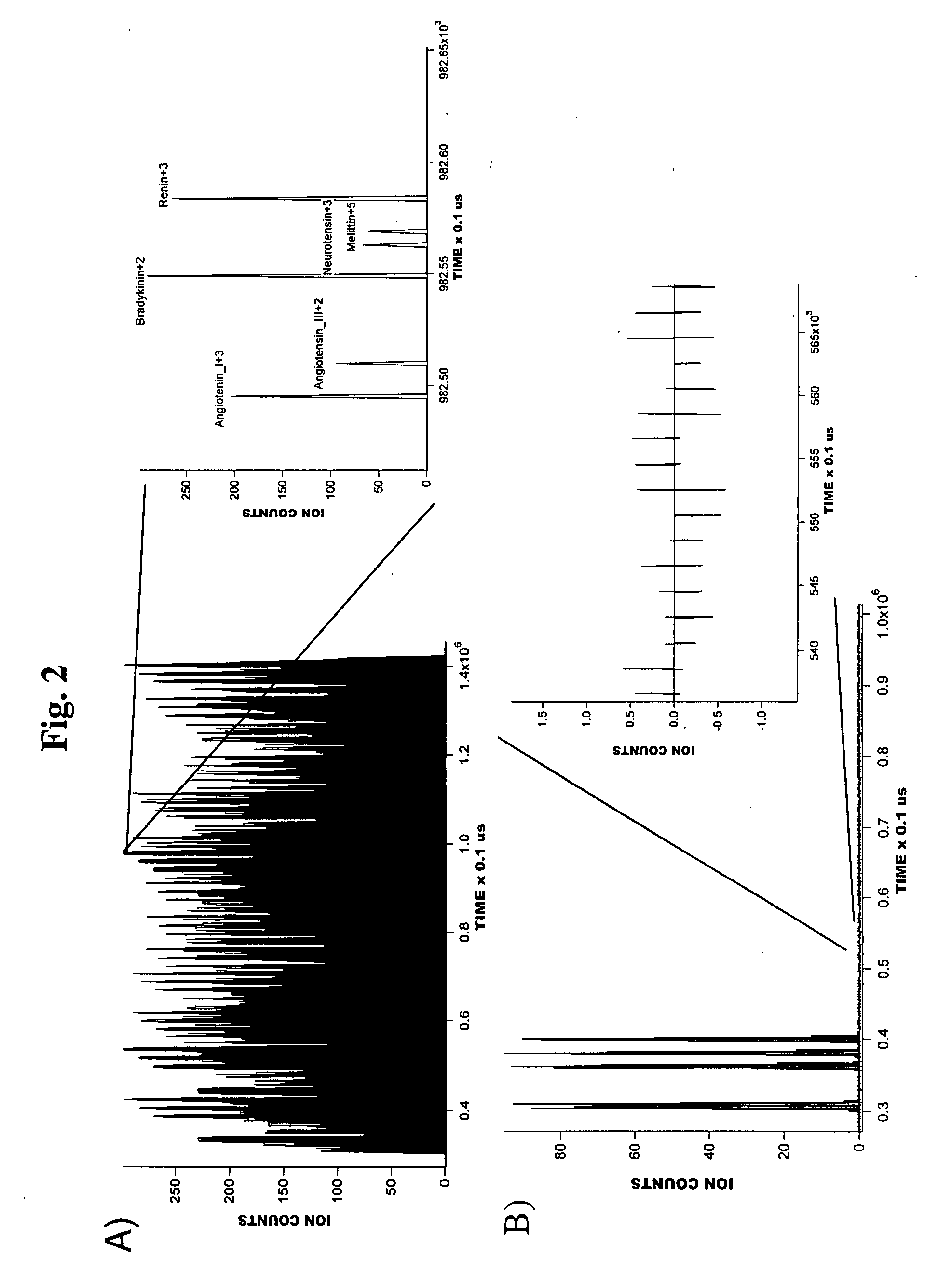Method of multiplexed analysis using ion mobility spectrometer
a mobility spectrometer and multiplexing technology, applied in the field of improved methods for analyzing ions, can solve the problems of difficult to achieve the effect of producing a high-sensitivity ims-ms, difficult to perform in-depth proteomic studies involving several hundred individual human blood plasma samples, and difficult to achieve the effect of effective discovery of low-level candidate biomarkers in such biological fluids
- Summary
- Abstract
- Description
- Claims
- Application Information
AI Technical Summary
Benefits of technology
Problems solved by technology
Method used
Image
Examples
Embodiment Construction
[0036]A series of experiments were conducted to illustrate the operation of a preferred embodiment of the present invention.
[0037]The multiplexed IMS-TOF MS approach of the present invention has been implemented using two commercial orthogonal TOF instruments; a Q-Star Pulsar (Sciex, Toronto, Canada) and an Agilent TOF (Agilent, Santa Clara, Calif.) arranged as shown in FIG. 1. The design of the ESI source and IMS drift tube coupled to both TOF spectrometers was as described in Tang, K.; Shvartsburg, A. A.; Lee, H.-N.; Prior, D. C.; Buschbach, M. A.; Li, F.; Tolmachev, A. V.; Anderson, G. A.; Smith, R. D. Anal. Chem., 2005, 77, 3330-3339. The ESI source incorporated a 50-um-i.d. fused silica tip electrospraying into a 64 mm-long 430-um i.d. heated inlet capillary operating at a temperature of ˜120° C. The ESI emitter was mounted on a 2D translation stage enabling fine position adjustment with respect to the inlet. All voltages in the ESI source were referenced to a 4 kV potential ap...
PUM
 Login to View More
Login to View More Abstract
Description
Claims
Application Information
 Login to View More
Login to View More - R&D
- Intellectual Property
- Life Sciences
- Materials
- Tech Scout
- Unparalleled Data Quality
- Higher Quality Content
- 60% Fewer Hallucinations
Browse by: Latest US Patents, China's latest patents, Technical Efficacy Thesaurus, Application Domain, Technology Topic, Popular Technical Reports.
© 2025 PatSnap. All rights reserved.Legal|Privacy policy|Modern Slavery Act Transparency Statement|Sitemap|About US| Contact US: help@patsnap.com



